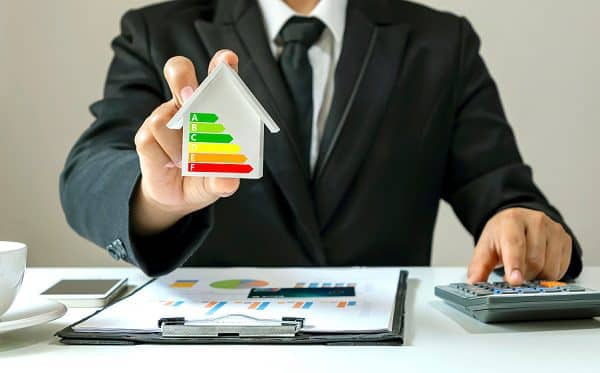Whether it's a matter of choice or necessity, energy sobriety is now a factor at every stage of corporate decision-making. The explosion in energy prices has brought the slogan of doing more with less back into fashion. Unsurprisingly, optimisation is leading companies towards profitability. At a time when climate change is accelerating and global geopolitics are in turmoil, sobriety is being embellished with virtues. Out with the straitjacket, in with this new phase of optimisation. Here's an update from Bertrand Coupet, a specialist in low-carbon strategies.

Adopting a low-energy approach is a strategic advantage for companies.
Firstly, in the face of climate change. Customers and contractors are urging companies to reduce their CO2 and energy consumption. But it's also a question of the long-term viability of businesses. By committing to a sustainable business model, we give ourselves the best chance of surviving the halving of greenhouse gas emissions by 2030, as set out in the Paris Agreement.
Secondly, because the outlook for short- and medium-term energy purchases - oil and gas - does not give cause for optimism. The major players themselves are announcing global reductions in oil availability of 10 % by 2025. As for gas, supplies in Europe are moving towards liquefied natural gas. A highly coveted resource!
Add to this equation inflation, shortages of raw materials and disruptions to supply chains... and you have a whole new set of challenges in terms of profitability, availability and product design.
So we're shifting the paradigm: sobriety is no longer just an effort, or even a step backwards, but an opportunity. So how can companies incorporate it into their strategy in a sustainable way?
Different kinds of sobriety: how do you apply them?
Energy efficiency
The company maintains the level of service it provides by reducing its energy requirements.
In general, this is the preferred solution because it does not involve any changes in operation. Energy consumption is reduced by changing the means of production using this energy.
Examples:
- Buy a new, more efficient machine
- Insulate buildings to save energy in the long term
- Change the heating method
- Replace internal combustion engine vehicles with electric vehicles
- Moving to buildings better suited to needs
Opting for greater energy efficiency requires a high level of investment. But companies can benefit from state subsidies.
Sober consumption
The idea is to make products last longer, whether they are bought by the company or manufactured and sold to customers. In other words, the aim is to replace them less often or buy them second-hand. In fact, a reconditioned high-tech equipment represents 80 % of CO2 less than for a new appliance.
This also means asking questions about the right need to optimise the object for its intended use.
Examples:
- Not everyone needs the latest ultra-powerful computer
- Equipment can be rotated within the company to suit user needs
Energy sobriety
The company is reducing the service it provides.
The most effective solution for reducing consumption, it is also the most demanding to implement. It requires you to make a number of sacrifices and change your behaviour. Reduce the number of deliveries, turn down the heating, reduce air travel in favour of rail...
What's at stake? Major financial and ecological gains for organisations that are able to rethink their usual way of working. After all, turning down the heating by 1°C means cutting your energy bill by 7 %. And every kilometre not driven saves around 10 centimes on petrol.
What's more, the return on investment is immediate because no capital outlay is required.
Sobriety: where do you start?
No improvement without measurement! Here are the first steps you need to take to get started.
Please note: each action will result in a plan for transforming the company in the short, medium and long term.
Drawing up a carbon assessment and associated low-carbon strategy
The carbon footprint lists the greenhouse gas emissions of a company's entire value chain, from mining to waste management. Thanks to this inventory, the company becomes aware of its "dependencies", which represent as many weaknesses in its business model. It also shows how it can adapt to future global challenges.
The carbon footprint also makes it possible to create new indicators for monitoring long-term sobriety, which will also result in the decarbonisation of the company. A Diag Décarbon'Action grant from Bpifrance, the French public investment bank, will cover most of the costs associated with this service.
Example:
Following the carbon audit carried out with BEE IMPACTA brewer realises that packaging accounts for 50 % of his product's carbon footprint. He therefore redirected part of the packaging of his production. He swapped the glass bottle for an aluminium can. From an energy and carbon point of view, there are several advantages. Firstly, aluminium requires less energy to manufacture than glass. Secondly, cans are lighter and more practical to pack, so transport is optimised. What's more, cans are just as recyclable as single-use glass bottles. Finally, the production cost of cans is not rising as fast as that of glass. It's a win-win situation for the brewer!
Implement flow micromanagement
Companies can also implement micromanagement of material, energy, waste and fluid flows with the Diag Ecoflux, subsidised by Bpifrance. Thanks to a precise analysis of flows, it is possible to draw up an action plan with a rapid return on investment (within a few months).
For example:
Reducing processing waste has multiple effects. It reduces or even eliminates :
- The cost of waste treatment
- Energy used unnecessarily to process products that will end up being thrown away
- Purchases of materials, which are also thrown away
- The administration of all these useless actions
The economic gain therefore far exceeds the savings linked to the reduction in the cost of waste treatment.
Adopting an ISO 50001 approach to energy management
This approach requires a good knowledge of the company's energy consumption and optimisation of the processes already in place. Internal implementation can be facilitated by training. Understanding best practice in energy management systems.
Reflect on the company's raison d'être and business model
It's an essential step for anyone planning a future for their business in a world with limited resources and energy.
For example, in terms of commercial strategy, this would mean favouring local development and eliminating the need to move people and materials to distant customers.
Implementing the functionality economy and eco-design of products
The idea is to optimise the service provided and the materials needed to design the products.
Transforming a sold product into a rental service changes the angle of attack in certain markets. The company's added value shifts from selling a product to selling a service linked to the product. As a result, the number of products manufactured could fall. Companies taking this route will also have to take a closer look at the sustainability of their products.
Raise awareness among employees
Finally, it is essential to make employees aware of the issues and the company's strategy in order to get as many people as possible to sign up to energy-saving measures. Turning down the heating, switching to an electric car or encouraging car-sharing can lead to discontent. Education and emulation through games or competitions will strengthen the team spirit around the company's sobriety objectives.
On the one hand, there is a climate emergency. On the other, the illusion of abundant, low-cost energy is coming to an end. Sobriety is emerging as a credible lever for meeting economic and environmental challenges. As far as companies are concerned, integrating sobriety into their strategy in a sustainable way means gaining a substantial competitive advantage. Cost optimisation, risk management and brand image development: sobriety is a winning strategy on many levels. As far as the planet is concerned, according to the IPCC, it could even reduce global greenhouse gas emissions by 40 to 70 % by 2050. Enough to achieve carbon neutrality?


